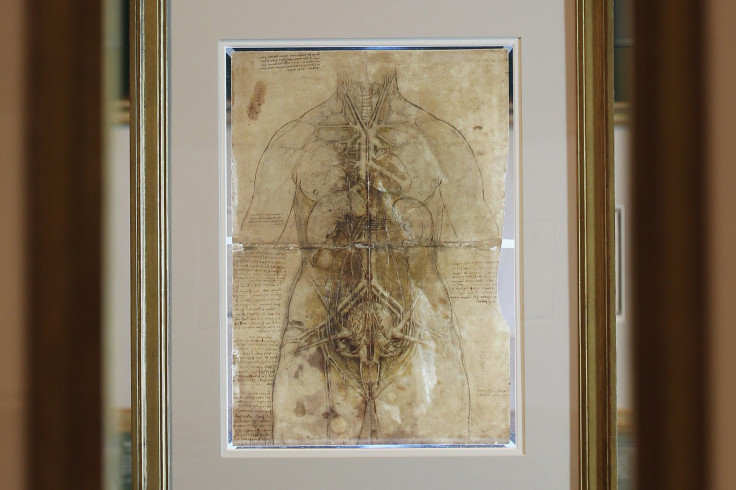Queen Elizabeth II-Owned Priceless Drawing Has Leonardo Da Vinci's Thumbprint [PHOTOS]

Queen Elizabeth II owns priceless antiques and pieces with historical significance, including a drawing by unarguably the most famous artist in history, Leonardo da Vinci. And this anatomical drawing by the Renaissance Master apparently contains da Vinci's thumbprint.
On Twitter, the Royal Collection Trust announced the discovery of the thumbprint on da Vinci's anatomical drawing called “The cardiovascular system and principal organs of a woman,” which dates back to around 1509 and 1510. The finding was revealed in a new book titled "Leonardo da Vinci: A Closer Look," which sheds light on the artist's work and analyzes 80 of da Vinci's drawings. The Royal Collection Trust is a charity established by Queen Elizabeth II in 1993 and is currently being managed by her son, Prince Charles.
It was revealed that da Vinci may have left behind a thumbprint on the work because he touched the drawing while his fingers had ink on them. “At the center of the sheet’s left edge, the print is in the same reddish-brown ink as the ink lines of the drawing,” the Royal Collection Trust said in a statement. “It can only be concluded that, after creating the work, the left-handed Leonardo picked up the sheet with inky fingers.”
Hidden details in #LeonardoDaVinci's drawings are revealed in our new book, 'Leonardo da Vinci: A Closer Look' which is published on Friday. This image shows his thumb print in the same reddish-brown ink as the rest of the drawing. https://t.co/BWNWiv7I2G #Leonardo500 pic.twitter.com/1xCeaNFU4t
— Royal Collection Trust (@RCT) January 28, 2019
Some of #LeonardoDaVinci sketches show how he worked with his pupils. Here you can see his lefthanded brown pen strokes correct the proportions of the angel’s arm, originally drawn in black chalk by a right-handed pupil. https://t.co/ozeSNzWyJl #Leonardo500 pic.twitter.com/ilPL2Q77Cw
— Royal Collection Trust (@RCT) January 29, 2019
Alan Donnithorne, the book's author and former head of paper conservation at the Royal Collection Trust, used several methods in his examination of da Vinci's work, including X-ray fluorescence, microscopy and ultraviolet imaging.
Based on his analyses, Donnithorne found that da Vinci had used many types of paper for his drawings. The paper he used for his 1519 drawing called "The head of an old bearded man in profile" had straw and fragments of rope that was used to repair the sheet.
"A sketch of the viscera" from 1515 to 1516, meanwhile, used paper that contains hair, wood chips, wood and even insects. These could have been "sweepings from the mill floor," the Royal Collection said.
This isn't the first time that examinations of artists' pieces have yielded surprising results. Last year, scientists used X-ray and imaging technology to unlock the secrets of a Picasso masterpiece, discovering that the famous artist had painted over another person's work.
Picasso apparently painted his 1902 piece “La Miséreuse accroupie” (The Crouching Woman) over a landscape by another artist. The study also revealed buried images linked to Picasso's other works.
Researchers at Art Gallery of Ontario (AGO) in Toronto, in cooperation with Northwestern University/Art Institute of Chicago Center for Scientific Studies in the Arts (NU-ACCESS) and the National Gallery of Art in Washington, made the discovery.
© Copyright IBTimes 2024. All rights reserved.



















